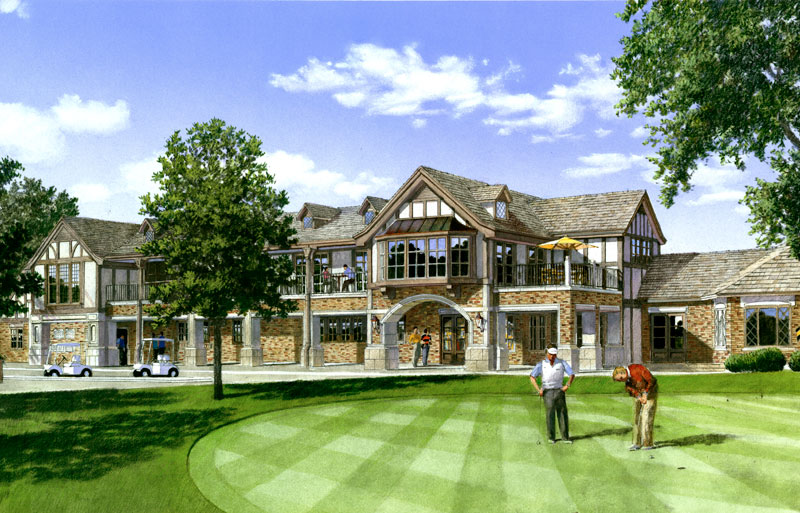
Transforming an Aging Clubhouse
For country clubs the age of renovation is here. Aging member facilities requiring endless maintenance, demands for a wider range of amenities, and the challenges of attracting new members are driving today’s country clubs to transform or fade away. But every property has unique conditions and membership needs that must be considered before determining the best way to renovate. Transforming your clubhouse should start by exploring a remodel versus replacing with new construction. As you might expect, each approach comes with its own pros and cons.
Starting a renovation without vetting its typical obstacles can ultimately stress your budget, even outpacing the costs of new construction. There are many considerations in deciding whether to renovate or build new, so the most important first step is engaging a truly experienced professional to help guide the process. An Architect with a background in master planning and remodels specifically for clubs brings a recognition of the unique operational hurdles you’ll face.
Financial impacts are foremost in deciding when and how to upgrade, but sequencing of construction and the need for temporary facilities can often be just as impactful. After assessments and financing terms, the inconvenience, temporary loss of amenities, and duration of disruptions caused by construction are among club members’ top fears when their club plans to renovate. Preparing a comprehensive Master Plan that explores phasing options, while considering the likely impacts of renovation or new construction can provide the insight needed to reduce or eliminate these concerns.
For most clubs remodeling should be the first approach. The cost of a renovation typically skews 20-25 percent less than for new construction, but it can also bring greater budgetary risk. Contingencies must cover the unexpected conditions present in existing buildings, and modifications needed to comply with stricter building codes can add costs with limited functional benefit. Remodels can also be hindered by site constraints, deteriorating infrastructure, and poorly configured amenities that can’t be overcome without wholesale replacement. Done well, a renovation can be highly successful and cost-effective, but in many aging facilities these harsh realities may dictate the decision to build new.
New construction is generally viewed as the more expensive approach when upgrading, but that depends on the conditions each project brings. Constructing a new building that stands separate from the existing “footprint” is an ideal scenario, allowing services to continue unhindered during construction. Limited available land makes this infeasible for many established clubs, who must instead use the space their clubhouse already occupies. But demolishing your existing clubhouse entirely to make way for the new building can leave services lacking, forcing a club to consider buying or leasing temporary replacement facilities for even the most basic services.
Finally, a seasoned clubhouse architect can help you explore renovating or replacing an existing clubhouse in stages, allowing select services to remain in operation while others are being upgraded. As construction progresses, newly built spaces become functional while work shifts to other elements. This process is known as “phasing”, and it allows members uninterrupted, albeit somewhat reduced, access to the amenities they expect. This approach can lessen operational impacts during a remodel, but the ‘stepping-stone’ process can extend the construction duration, prolonging the inconvenience and increasing costs. The key is to find the correct balance for keeping vital components running without causing negative impacts or counteracting costs.
Whether you ultimately decide to remodel or replace an outdated clubhouse, there will always be some level of disruption. Engaging professionals who investigate and understand your club’s needs and priorities, and who can help you prepare and execute a well-conceived Master Plan, will greatly reduce the disturbances and overall expenses. This is a key first step toward a successful upgrade that will sustain and reinforce your club’s membership for generations to come.
By Bryan D. Webb, Principal
Marsh and Associates, Inc.
This article appeared in The Boardroom Magazine, July/August 2015

